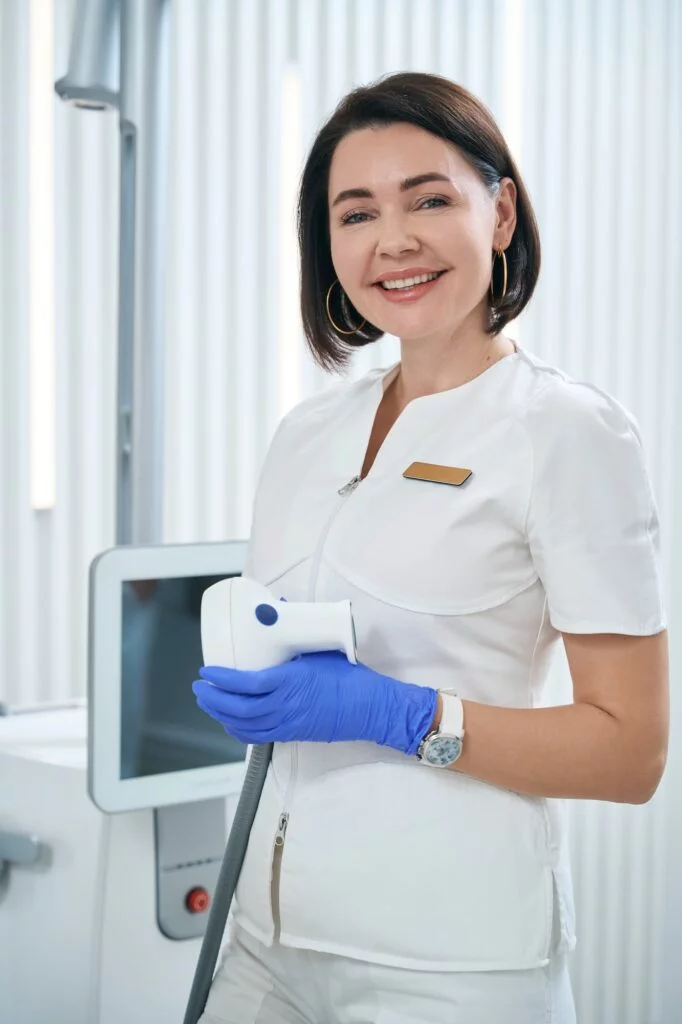Hemorrhoids are a common rectal problem, particularly for people who are pregnant, are poorly hydrated, or engage in strenuous activities involving a lot of squatting and heavy lifting. When increased fiber in the diet or over the counter topical medications do not reduce hemorrhoids, you may need hemorrhoidal banding.
What Are the Symptoms of Hemorrhoids?
Located in and around the rectum, hemorrhoids are really varicose veins, or blood vessels which experience sluggish circulation due to incompetent valves within veins. These rectal veins exist in clusters, or piles, surrounding the anal opening.
When overstretched, the veins bulge and cause the inflamed, enlarged structures we call hemorrhoids. They are very common in both men and women, especially in ages 50 and up.
As hemorrhoids increase in number and size, people experience a number of uncomfortable, and sometimes debilitating, symptoms. These include:
- Pain and soreness in the rectum
- Blood on underwear or toilet tissue
- Extreme itching
- Prolapse, or bulging, of hemorrhoids outside the anal opening
- A perceived urge to have a bowel movement
These symptoms limit the ability to sit and stand for long periods of time and to comfortably do many activities of daily living.
How Can In-office Hemorrhoidal Banding Help?
Your gastroenterologist may recommend a minimally invasive procedure called hemorrhoidal banding when warm water soaks (sitz baths), topical medications, such as Preparation H, and other at-home treatments prove ineffective. Banding involves simple placement of tight ligatures around each hemorrhoid to eliminate circulation to the affected vein and to make the hemorrhoid fall off.
Depending on the number of hemorrhoids needing treatment, banding may be done in two-week intervals to allow for adequate healing in between. Fortunately, people respond really well to this procedure; there is no special preparation beforehand, no anesthesia required, and no appreciable downtime.
How Can You Maximize Your Banding Treatment?
Hemorrhoid banding takes just 15 to 30 minutes at your GI specialist’s office. You do not have to fast or avoid any medications unless your doctor tells you to.
To maximize the effectiveness of your banding, drink 7 to 8 glasses of water daily to stay well-hydrated in the days ahead of your procedure. Aim for 15 grams of fiber daily.
Afterwards, patients are advised to avoid lifting and prolonged sitting on the toilet for a week or so. While many people go back to work the day after their procedure, check with your GI specialist for when you can return to all your normal activities. Watch for bleeding or signs of infection: however, these adverse effects are rare.
Finally, walking and a high-fiber diet with added oat and wheat bran speed healing and avoid future episodes of hemorrhoid formation. Avoid smoking and limit alcohol consumption to promote healthy blood circulation and healing.
Treatment For Hemorrhoids at Genensis Healthcare Partners
We have many board-certified gastroenterologists working in 20 affiliated medical practices throughout the state of California. If you need help with hemorrhoids or any other gastrointestinal issue, please select a location and call us for an appointment. Additionally, you can request your visit here. We hope to hear from you soon!



